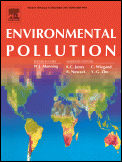Environmental Pollution 163
Overview of new articles on POPs in a new issue of the Environmental Pollution journal.

China's water pollution by persistent organic pollutants
Pages 100-108
Lian-Jun Bao, Keith A. Maruya, Shane A. Snyder, Eddy Y. Zeng
- Levels of POPs in China's aquatic systems were generally at the high end of the global range. New inputs of DDTs, likely related to the use of dicofol and anti-fouling paints, were found. Occurrence of PCBs and DDTs in some water bodies pay pose potential human health risk. Long-term monitoring of POPs in China's waters is needed to fill data gaps.
Computational toxicology: Physiologically based pharmacokinetic models (PBPK) for lifetime exposure and bioaccumulation of polybrominated diphenyl ethers (PBDEs) in marine mammals
Pages 134-141
Liesbeth Weijs, Adrian Covaci, Raymond S.H. Yang, Krishna Das, Ronny Blust
- PBPK modeling is a non-invasive and non-destructive tool for risk assessment. PBPK modeling was used to study the kinetics of several PBDEs in harbour porpoises. Harbour porpoises are sensitive to pollution and therefore ideal model organisms. Black Sea data were used for model parameterization. North Sea data were used for assessing temporal trends (1990–2008).
Desorption behaviors of BDE-28 and BDE-47 from natural soils with different organic carbon contents
Pages 235-242
WenXin Liu, FangFang Cheng, WeiBo Li, BaoShan Xing, Shu Tao
- A two-compartment first-order kinetic model for the PBDEs studied was established. Isotherm was fitted well by a linear distribution or a nonlinear Freundlich model. Desorption commonly exhibited somewhat hysteresis relative to sorption. Soil organic carbon fractions showed close correlations with the model parameters.
Sedimentary record of polycyclic aromatic hydrocarbons in a reservoir in Northeast China
Pages 256-260
Tian Lin, Yanwen Qin, Binghui Zheng, Yuanyuan Li, Lei Zhang, Zhigang Guo
- The 50 year trend of PAHs in a reservoir in Northeast China was established. The decrease of the 16 PAHs since 1990s could be attributed to the energy structure change in the region. The increase of 5+6 ring PAHs in the reservoir could be partly due to the contribution from vehicle emissions. The PAH time trend in this study is different from that in the U.S. and European countries, and other areas of China
14.2.2012




